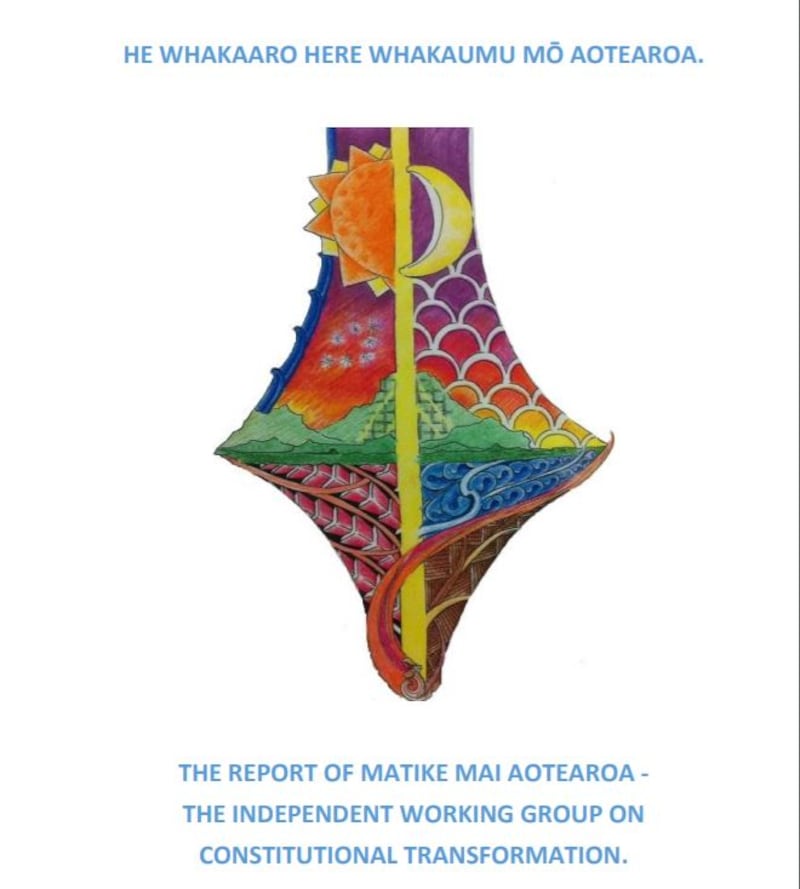Māori academics and constitution experts believe now is the right time to start discussions about a way forward as a country. Interest in learning about Te Tiriti o Waitangi—the understanding of the Māori version of the treaty in which Māori did not cede sovereignty to the Crown—is building.
Professor Makere Mutu was one of four who spoke to the public at the Waitangi Forum Tent about the way forward. She gave a special mention to David Seymour, the creator of the Treaty Principles Bill.
“What David Seymour has done, I’m quite thankful for it,” Margaret Mutu says.
“Because he has allowed us to have a conversation that we had difficulty with and spread that conversation out and across the country, and he’s actually done that for us,” says Mutu.

Matike Mai Aotearoa Report—‘the values that underpin our constitution.’.
Mutu worked alongside the late Moana Jackson with the Matike Mai Aotearoa report, a result of 252 hui across the country between 2012 and 2015, setting the framework for constitutional change for Aotearoa.
“This is about transforming it and going back to He Whakaputanga and going back to Te Tiriti and actually looking at it, in what they actually mean and actually moving from there,” says Mutu.
Academic Carwyn Jones agrees and says the report helps people to focus on the values that underpin the country’s constitution.
“Rather than just having a tutu around with the number of MP’s (Members of Parliament) we’ve got or thinking about what the treaty principles are, we can actually move beyond that to have a much more productive constitution.”
Ko te Hawaiki hou
Ko te Eru Kapa-Kingi tētahi o te hunga e tautoko ana i te karanga, kia ū te waka nei ki tētahi Hawaiki hou.
“Kia whakapono ai tātou [ka] taea tēnei ao o tua e tātau te hanga, te hakatū, te hakariterite, ko taku ki ngā iwi, ka taea e tātau,” te kī a Kapa-Kingi.
Pāoroorotia rā ngā reo ki Waitangi
Ko Tākuta Emily Rākete tērā i āta noho ki te whakaringi ki ngā kōrero i ahu mai i te pānara o ngā mātanga ture o te ao Māori, ko Māui Solomon tērā, ko Verinoca Tāwhai tērā, ko Makere Mutu hoki tērā, ka mutu, ko tāna i rongo ai, me noho mātāmua te katoa, i tēnā o te kotahi.
“Collective ownership over the needs of production, democratic control over wealth and distribution of goods on the basis of need rather than for the profit of a handful of oligarchs who dump money into right-wing fronts, think tanks, and political parties,” says Rākete.
I rangona hoki te reo rangatahi i tēnei rā.
“In the future they shouldn’t have to ask for permission to build on the houses again, and that’s sort of what the change looks like for me, is we shouldn’t be asking; we should have our land back.”



